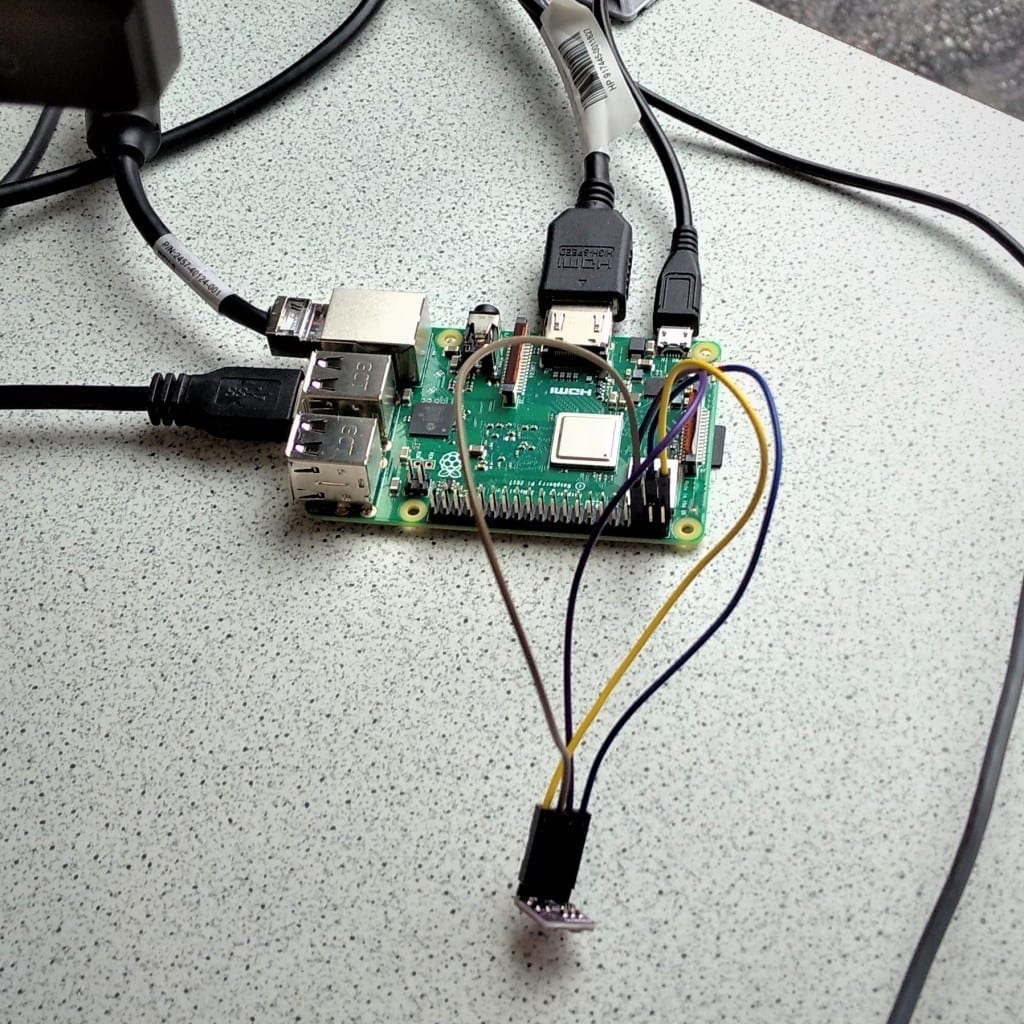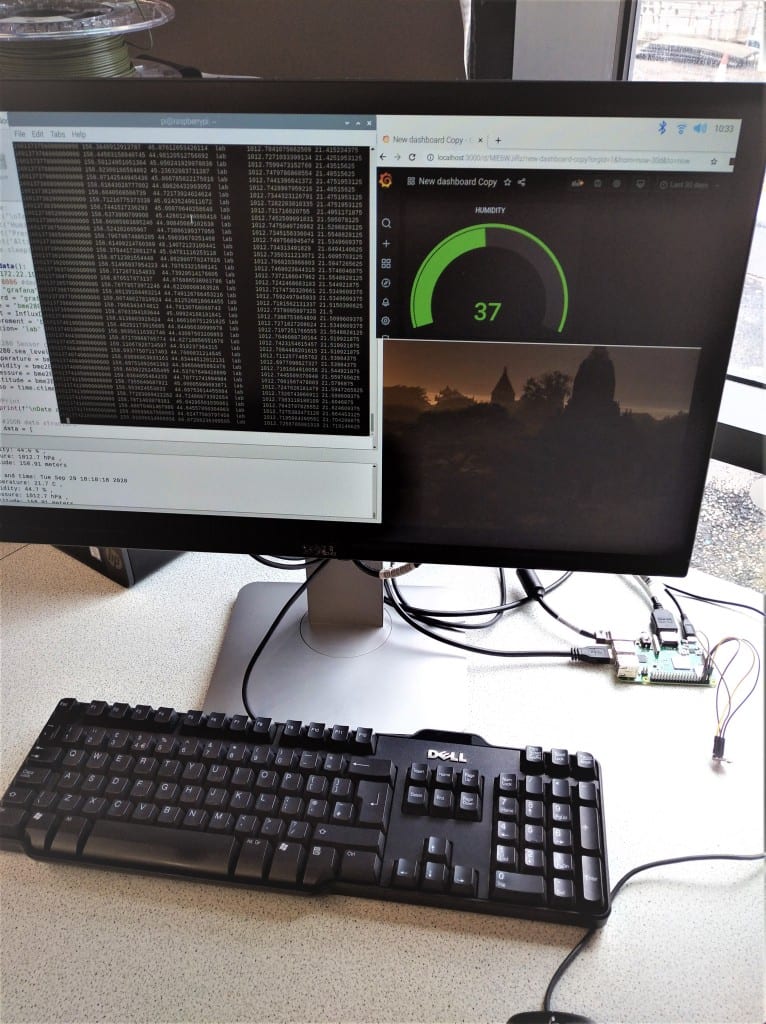One of our Prototyping Engineers, Gabriela Adamczyk, is currently integrating a Raspberry Pi as part of an environmental monitoring system station.
This £30, small single board computer is predominantly being used in this project as a desktop computer, with a monitor, mouse and keyboard attached to it. But, it can also be used as a standalone microcontroller in its own right, and in this instance Gabi has connected it to an Adafruit/Bosch BME280 sensor via its i2c data-bus, a connectivity method that allows various sensors and systems to be attached.
It’s a great way to develop a prototype, the Pi can be used as a desktop computer during development, then deployed in-field as a microcontroller. Gabi’s work will enable temperature, barometric pressure and humidity readings to be taken, which is ideal for indoor environmental sensing projects.
The collected data is then passed into an InfluxDB database, an open-source time series database which is optimized for fast, high-availability storage and retrieval of time series data, in fields such as operations monitoring, application metrics, Internet of Things sensor data, and real-time analytics.
The readings are then displayed in a Grafana dashboard. With the Pi being so powerful, this database and dashboard can be hosted within the Pi itself – keeping the system entirely self contained.
In the future, our Raspberry Pi environmental monitoring system could also be integrated with other sensors, such as an infrared camera, light sensor or gas sensor, to capture other key metrics. Industry applications, such as building management or manufacturing production lines, rely on this type of technology to make data-led decisions and real-time adjustments to working environments.

